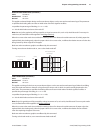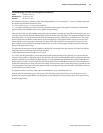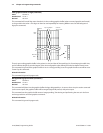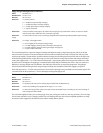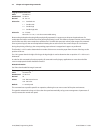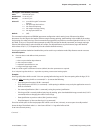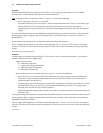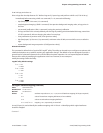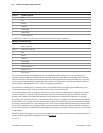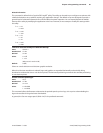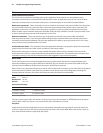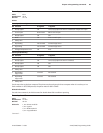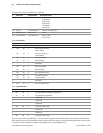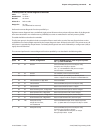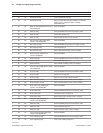
Chapter 5: Programming commands 79
A776-PG00001 C 12/09 A776 (B780) Programming Guide
f = 4 link logo print before cut
Prints a logo after the skip distance of “s” before a logo and “p” past a logo and performs a knife cut (1F 03 16 04 s p).
Immediately before executing a knife-cut command, if s > 0, execute the following:
• skip(feedpaper)“s” dot rows (15 s command)
• stopbackgroundmerging(1D9B1command).Savepreviousbackgroundmergingvalue,sologoprintsin
the clear
• setcenteredjustication(1B611command),savingthepreviousjustication
• ifalogoatindexF3hiscurrentlydened,printthelogobysendingprintdownloadedbitimage,normalsize
(1D 2F 0 command), without changing the value of current logo.
• resetjusticationtopreviousvalue(1B61[previousvalue])
• skip(feedpaper)“p” dot rows (15 p command) a minimum value of 90h, to ensure knife cut occurs after the
logo
• restorebackgroundmergesuspension(1D9B[previousvalue])
Related information
This command is utilized in the CognitiveTPG LogoEZ
®
utility. The utility can be used to pre-congure new printers with
a default colorization set-up without requiring any application changes. The default set-up was designed to provide a
general level of colorization features that would not aect the printer operation. You can expand beyond the default
features of the utility by modifying the application at the host. However, do not attempt to
modify the settings within the utility.
LogoEZ
®
utility default settings:
f = 1: s = 1H
a = 30H
f = 2: s = 32H
r = 19H
f = 3: s = 1H
r = 7H
t = 1H
f = 4: s = 30H
a = A0H
Set LogoEZ
®
attribute mapping (ColorPOS
®
)
ASCII US ETX ETB a m s
Hexadecimal 1F 03 17 a m s
Decimal 31 03 23 a m s
Values: a = attribute map selector a , m, s = 0, 0, 0 turn o attribute mapping (all 3 bytes required)
a = 1 selects rst attribute mapping denition (of two available)
a = 2 selects second attribute mapping denition
a = 1 or 2, if m = 0 mapping 1 or 2, respectively, is turned o
A word (2 bytes) is used to identify the attribute mapping, with “m” bits 0 – 6 identifying which original attributes
should be mapped:
Continued . . .



